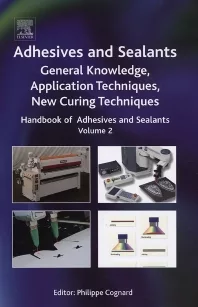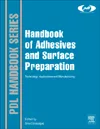Dispensing Small Drops of Low-Viscosity Adhesives Using Diaphragm Valves

Dispense tips.
Many adhesive applications require fast and accurate dispensing. For high-speed, small-drop-size, low-viscosity adhesive-dispensing applications, total cycle rates of one part per second are attainable. Thorough testing during the process-design phase ensures reliable dispensing and the overall success of the adhesive assembly during manufacturing and throughout the life of the device.

Diaphragm dispense valve.
Diaphragm Valve Dispense
Many adhesive-dispense applications use a pressurized fluid reservoir with a diaphragm valve. The control variables are fluid reservoir pressure vs. fluid-flow restriction exerted by the dispense valve and dispense tip. The cone-shaped tip of the diaphragm is normally closed against the liquid port through the valve head, by way of the valve actuator spring.The total opening stroke of the valve may be adjusted to pull the tip farther back out and away from the internal liquid port. A longer stroke will “pull” the adhesive up through the dispense needle tip at the front of the valve. Minimum stroke length is typically recommended, as the adhesive will need to come back “down” after the opening stroke before exiting the needle tip.
Loctite’s cyanoacrylate or light-cure dispense valves are typically set at ½ turn counterclockwise.
Dispense-Needle Tips
Dispense-needle tips are usually chosen to match the size of the target (e.g., smaller-diameter [high-guage-number] needle tips are used to apply smaller adhesive drop sizes). The higher the needle gauge number, the more restrictive the fluid flow. The largest possible needle diameter and lowest possible reservoir pressure to achieve the desired shot/drop size should be used. In addition, long, straight needle tips are more restrictive than short or tapered needle tips.Liquid-Touch Transfer
In order to ensure that the desired adhesive weight/volume is transferred to a part surface, the dispense-needle tip must come into contact with the part surface. This is commonly called touch transfer. The goal is to allow the part surface to “pull” the adhesive away from the needle tip.Free-falling drops of liquid adhesive require the adhesive to separate from the needle tip due to gravity. This method is not reliable for high-speed dispensing.
Dispense-Time Duration
The maximum operating cycle rate for a diaphragm valve is typically 500x per minute (120 milliseconds per cycle). The total dispense cycle consists of the following events.- The dispense valve is moved into the dispense position (tips are placed in contact with the surface).
- A pneumatic signal is used to open the valve.
- The valve is open for a set duration of time.
- A pneumatic signal is set off to close the valve (by way of a spring).
- The valve remains in the dispense position to allow the adhesive to fully transfer.
- The dispense valve is moved back/out/up to the neutral position.
- The next part or part-dispense location is moved into position.
The pneumatic signal to open the valve is quick, however it typically takes 25 milliseconds to open the valve. The valve closing action from the actuator spring also requires approximately 25 milliseconds.
The valve open-time duration is established by the fluid reservoir pressure vs. the dispense-needle tip restriction. Depending on the viscosity of the fluid and the target shot/drop size, the total open time required may be as low as 50 milliseconds. The time duration in which the valve tip must continue to remain in the dispense position to allow the adhesive to be ‘pulled’ away from the tip and onto the part surface is typically another 50 milliseconds.

Cutaway illustration showing the adhesive in the valve when the valve is closed (left) and open (right). Left shows "no flow" while right shows "flow."
Practical Limitations
High-speed dispensing of low-viscosity adhesives may be performed with a standard spring-closed diaphragm-dispense valve. Shot sizes as small as 3 milligrams may be transferred from the dispense-needle tip to the part surface in approximately 1/8 second. It is important to consider the amount of time required to move the dispense valve tip (or the part itself) into and out of the dispense location.For more information, contact Darryl J. Small, senior project engineer, Henkel Corp., 1001 Trout Brook Crossing, Rocky Hill, CT 06067, phone (860) 571-5100.
SIDEBAR: Application Case Study
BackgroundA customer is using an
Looking for a reprint of this article?
From high-res PDFs to custom plaques, order your copy today!






